New research shows a glaring lack of transparency in environmental organizations
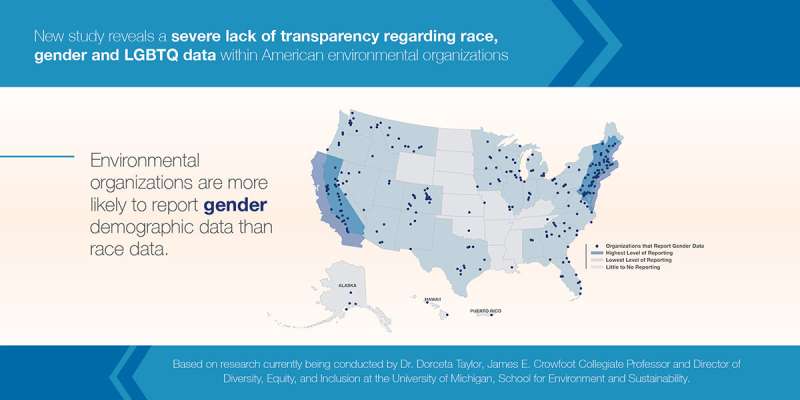
New research finds that environmental organizations are still reluctant to release data or report on the gender, race and LGBTQ composition of their staff.
In a study conducted by Dorceta Taylor of the University of Michigan's School for Environment and Sustainability, initial findings reveal that environmental organizations are generally hesitant to make their demographic and diversity data public.
Taylor and her team studied more than 12,000 environmental organizations of different sizes and types in all U.S. states and territories to find out whether they reported information about the demographic characteristics of their staff on public platforms like GuideStar.
"Environmental organizations lack racial diversity and little information is publicly available on the demographic characteristics of these institutions," Taylor said. "An important step in creating more diverse and inclusive environmental organizations is to be transparent about the status of diversity within this sector of the workforce."
When Taylor released the report, "The State of Diversity in Environmental Organizations: Mainstream NGOs, Foundations, and Government Agencies," in 2014, she and Green 2.0, an initiative focused on increasing racial diversity across mainstream environmental NGOs, foundations and government agencies, called for increased transparency about and reporting on the demographic characteristics of environmental organizations. Green 2.0 collaborated with GuideStar to make such reporting a part of the profile that environmental nonprofits put on the GuideStar platform.
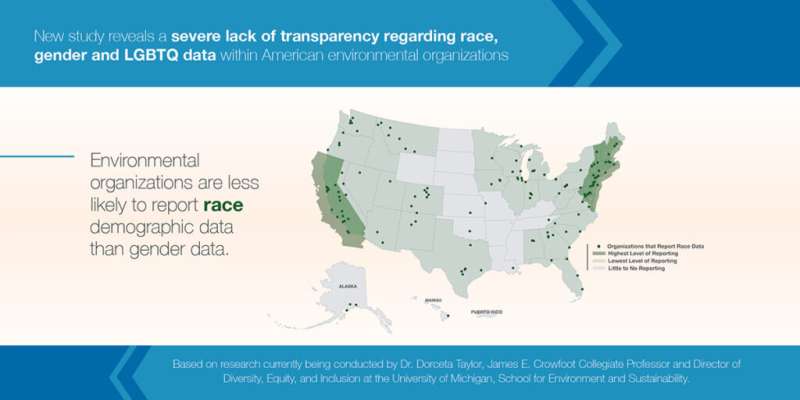
Five years later, Taylor finds a "pervasive culture of secrecy that leads most environmental organizations to keep demographic information private or hidden behind a veil of ignorance by claiming that they do not collect demographic data about their employees."
Some of the early findings of the 2019 study, presented earlier this year in Chicago at the New Horizons in Conservation conference, include:
- Fewer than 4 percent of the environmental organizations studied release any demographic data at all.
- There are regional differences when it comes to reporting. The highest level of reporting comes from environmental organizations located along the Northeast Corridor between Boston and Washington, D.C., and organizations located in California. The lowest level of reporting occurs in parts of the Mountain region as well as parts of the Deep South.
- Environmental organizations are more likely to reveal gender diversity data than racial diversity data. About 3.5 percent of the organizations surveyed reported the gender breakdown of their staff. About 2 percent of the organizations revealed the racial characteristics of their workforce.
- The 2014 report also called on environmental organizations to collect and share data on the lesbian, gay, bisexual, transgender and queer composition of their staff. While the number of environmental nonprofits collecting LGBTQ data is increasing, only about 0.2 percent of the organizations studied reported this kind of data.
- The research also examines whether the practice of revealing diversity data has increased since the 2014 Green 2.0 and GuideStar collaboration. The study finds that reporting on the demographic characteristics of the staff of environmental nonprofits was virtually nonexistent before 2014. Between 2014 and 2016, there was a sharp increase in the reporting of demographic data. Between 2017 and 2018, there has been a steep decline in the reporting of demographic data.
-
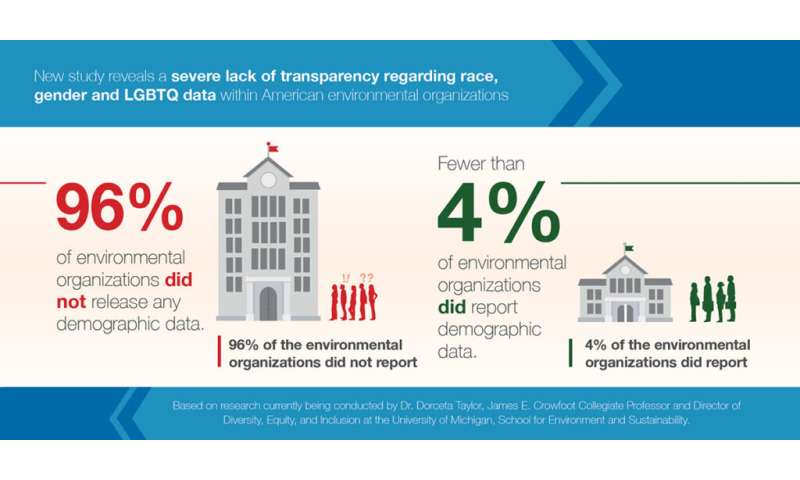
Credit: University of Michigan -
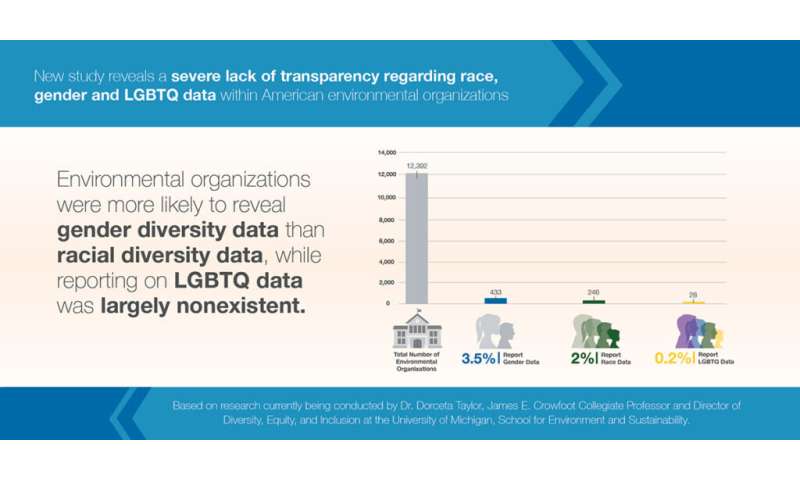
Credit: University of Michigan -
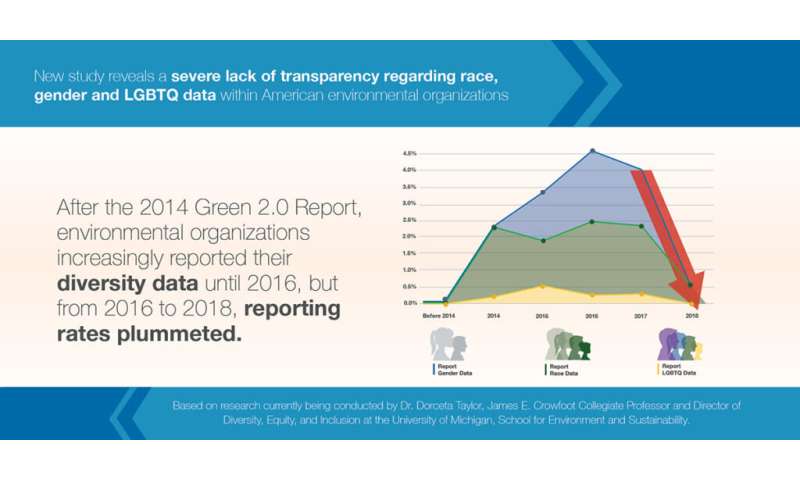
Credit: University of Michigan
More information: The State of Diversity in Environmental Organizations: Mainstream NGOs, Foundations, and Government Agencies: www.researchgate.net/publicati … _Government_agencies
Provided by University of Michigan



















